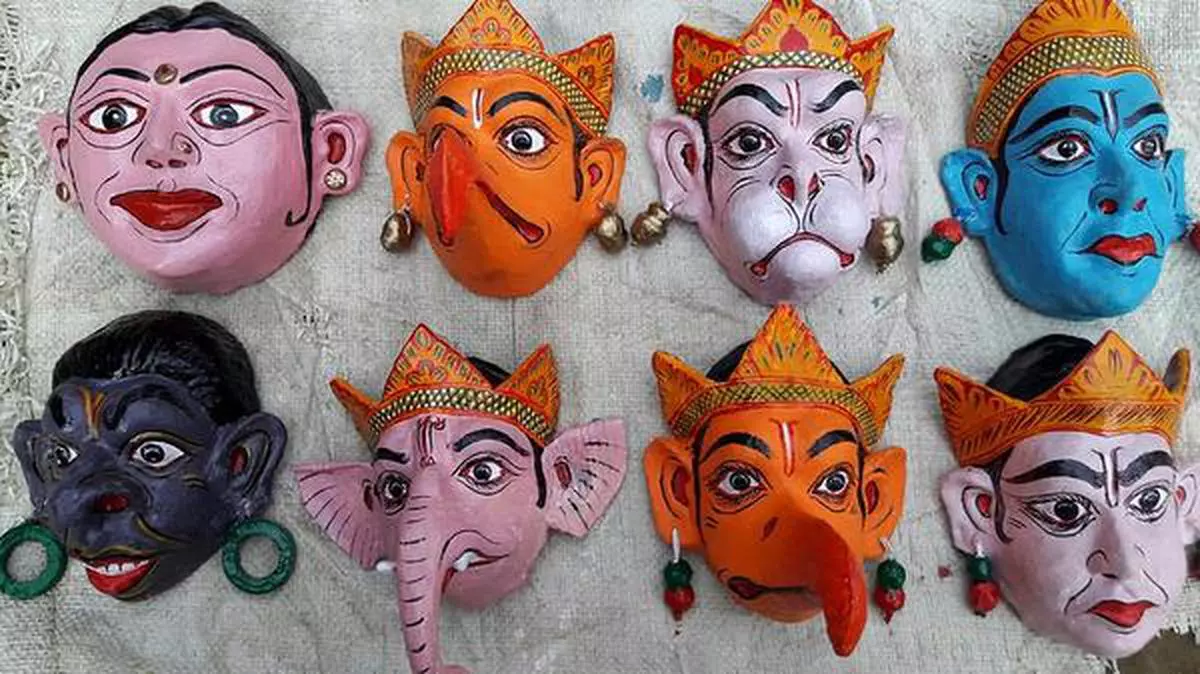Description

Disclaimer: Copyright infringement not intended.
Context
Majuli, the largest river island in the world and the seat of Assam's neo-Vaishnavite tradition, has recently gained recognition for its traditional Majuli masks, receiving a Geographical Indication (GI) tag. These masks hold significant cultural and artistic value, deeply rooted in Assamese heritage.
Details
Origin and Tradition
- Historical Roots: The art of mask-making in Majuli dates back to the 16th century, rooted in the neo-Vaishnavite tradition introduced by the reformer saint Srimanta Sankardeva.
- Artistic Expression: Traditionally used in bhaonas, or devotional theatrical performances, Majuli masks depict various characters from Hindu mythology, including gods, goddesses, demons, animals, and birds.
- Artistic Range: Masks vary in size and complexity, ranging from face masks (mukh mukha) to full-head and body masks (cho mukha), each crafted meticulously by skilled artisans.
Materials and Craftsmanship
- Composition: Majuli masks are crafted using bamboo, clay, dung, cloth, cotton, wood, and other materials sourced from the riverine surroundings of the artisans.
- Artistic Process: Artisans invest significant time and skill in creating these masks, with larger and more intricate designs requiring up to one-and-a-half months of meticulous craftsmanship.

Significance of Monasteries
- Role of Sattras: Sattras, established by Srimanta Sankardeva and his disciples, serve as monastic institutions fostering religious, social, and cultural reform.
- Cultural Hub: These monasteries are integral to the preservation and promotion of traditional performing arts, including borgeet (songs), xattriya (dance), and bhaona (theatre), where Majuli masks find their place.
Key Sattras in Majuli
- Majuli boasts 22 sattras, with four main sattras—Samaguri Sattra, Natun Samaguri Sattra, Bihimpur Sattra, and Alengi Narasimha Sattra—being significant centers for the tradition of mask-making.
- Samaguri Sattra: Since its establishment in 1663, the Samaguri Sattra has remained a bastion of mask-making, nurturing the craft through generations.
Expanding Artistic Horizons
- Recent efforts aim to transform mask-making into a versatile art form with broader applications.
- To sustain the livelihood of artisans, initiatives have been undertaken to diversify the usage of masks and make them economically viable.
- This includes incorporating masks into events, selling them to tourists, and showcasing them in exhibitions, including international venues like the British Museum.
- The introduction of masks into diverse settings, such as gifting small masks at events and promoting sales to tourists, fosters cultural exchange and appreciation for Majuli's artistic heritage.
Majuli Manuscript Painting
- Historical Significance: Originating in the 16th century, Majuli manuscript painting involves creating intricate artworks on sanchi pat (manuscripts) crafted from the bark of sanchi or agar trees, using homemade ink.
- Patronage: Historically patronized by the Ahom kings, these paintings continue to thrive in every sattra (monastery) in Majuli, serving as a testament to the region's rich cultural heritage.
- Artistic Continuity: The paintings reflect Assam's cultural identity, preserving narratives from texts like the Bhagwat Purana in Assamese, as illustrated in the earliest examples attributed to Srimanta Sankardev.

Other GI Tags from Assam
- Assam (Orthodox) Logo
- Muga Silk of Assam (Logo)
- Muga Silk
- Assam Karbi Anglong Ginger
- Tezpur Litchi
- Joha Rice
- Boka Chaul
- Kaji Nemu
- Chokuwa Rice
- Gamosa
|
PRACTICE QUESTION
Q. The recognition of Majuli masks with a GI tag not only celebrates Assam's rich cultural heritage but also safeguards and promotes the legacy of traditional craftsmanship. Comment. (150 Words)
|















